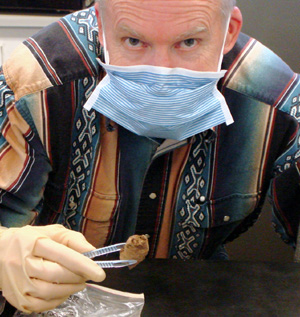
Who could have guessed that the UO archaeology story to get the most play this year would revolve around ancient excrement?
When the journal Science broke the news last April of UO archaeologist Dennis Jenkins' discovery of "coprolites" left behind by humans 14,300 years ago, it became an international story within a matter of minutes.
Dozens of media outlets -- print, radio and television -- have covered Jenkins' find, which he made while exploring Paisley Caves in the Cascade Range of Oregon.
Stories appeared in The New York Times, San Francisco Chronicle, U.S. News and World Report, National Geographic and even abroad in the United Kingdom's Telegraph and Canada's Globe and Mail. Jenkins was also interviewed on NPR, on PBS's NewsHour with Jim Lehrer and on The History Channel for a show called All About Dung. (See links below to news stories and video.)
Why such a big story? Well, besides the humorous headlines these media sources get to write, these fossilized specimens bring us closer to the long unanswered question: Who were the first Americans?
Jenkins' team of archaeologists collected the strongest evidence yet that humans at least passed through North America more than 1,000 years earlier than previously thought. And because the fossilized specimens preserved human DNA, scientists now have a rare opportunity to learn about the lifestyle and diets of these first people.
Watch a VIDEO from PBS's NewsHour that tells the story of the fossil feces that Jenkins found in the Paisley Caves of Oregon.
Here's a list of links to stories published around the world.
Science
National Public Radio
Seattle Times
Washington Post
The Oregonian
The New York Times
San Francisco Chronicle
National Geographic
Los Angeles Times
Telegraph (UK)
HealthDay News
Canada's Globe and Mail
Belfast Telegraph
Forbes

